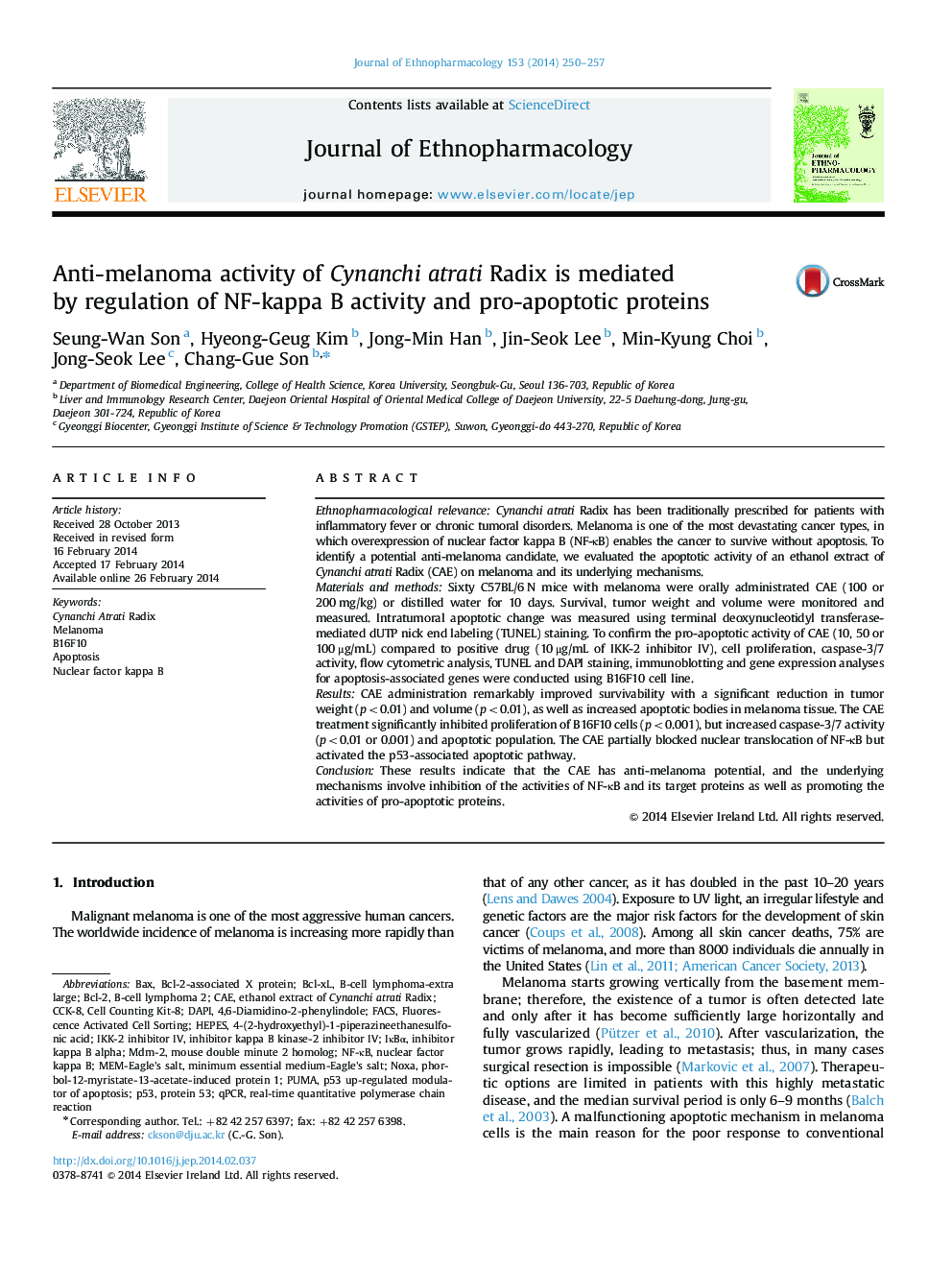| کد مقاله | کد نشریه | سال انتشار | مقاله انگلیسی | نسخه تمام متن |
|---|---|---|---|---|
| 2545388 | 1123952 | 2014 | 8 صفحه PDF | دانلود رایگان |

Ethnopharmacological relevanceCynanchi atrati Radix has been traditionally prescribed for patients with inflammatory fever or chronic tumoral disorders. Melanoma is one of the most devastating cancer types, in which overexpression of nuclear factor kappa B (NF-κB) enables the cancer to survive without apoptosis. To identify a potential anti-melanoma candidate, we evaluated the apoptotic activity of an ethanol extract of Cynanchi atrati Radix (CAE) on melanoma and its underlying mechanisms.Materials and methodsSixty C57BL/6 N mice with melanoma were orally administrated CAE (100 or 200 mg/kg) or distilled water for 10 days. Survival, tumor weight and volume were monitored and measured. Intratumoral apoptotic change was measured using terminal deoxynucleotidyl transferase-mediated dUTP nick end labeling (TUNEL) staining. To confirm the pro-apoptotic activity of CAE (10, 50 or 100 μg/mL) compared to positive drug (10 μg/mL of IKK-2 inhibitor IV), cell proliferation, caspase-3/7 activity, flow cytometric analysis, TUNEL and DAPI staining, immunoblotting and gene expression analyses for apoptosis-associated genes were conducted using B16F10 cell line.ResultsCAE administration remarkably improved survivability with a significant reduction in tumor weight (p<0.01) and volume (p<0.01), as well as increased apoptotic bodies in melanoma tissue. The CAE treatment significantly inhibited proliferation of B16F10 cells (p<0.001), but increased caspase-3/7 activity (p<0.01 or 0.001) and apoptotic population. The CAE partially blocked nuclear translocation of NF-κB but activated the p53-associated apoptotic pathway.ConclusionThese results indicate that the CAE has anti-melanoma potential, and the underlying mechanisms involve inhibition of the activities of NF-κB and its target proteins as well as promoting the activities of pro-apoptotic proteins.
Figure optionsDownload high-quality image (185 K)Download as PowerPoint slide
Journal: Journal of Ethnopharmacology - Volume 153, Issue 1, 11 April 2014, Pages 250–257